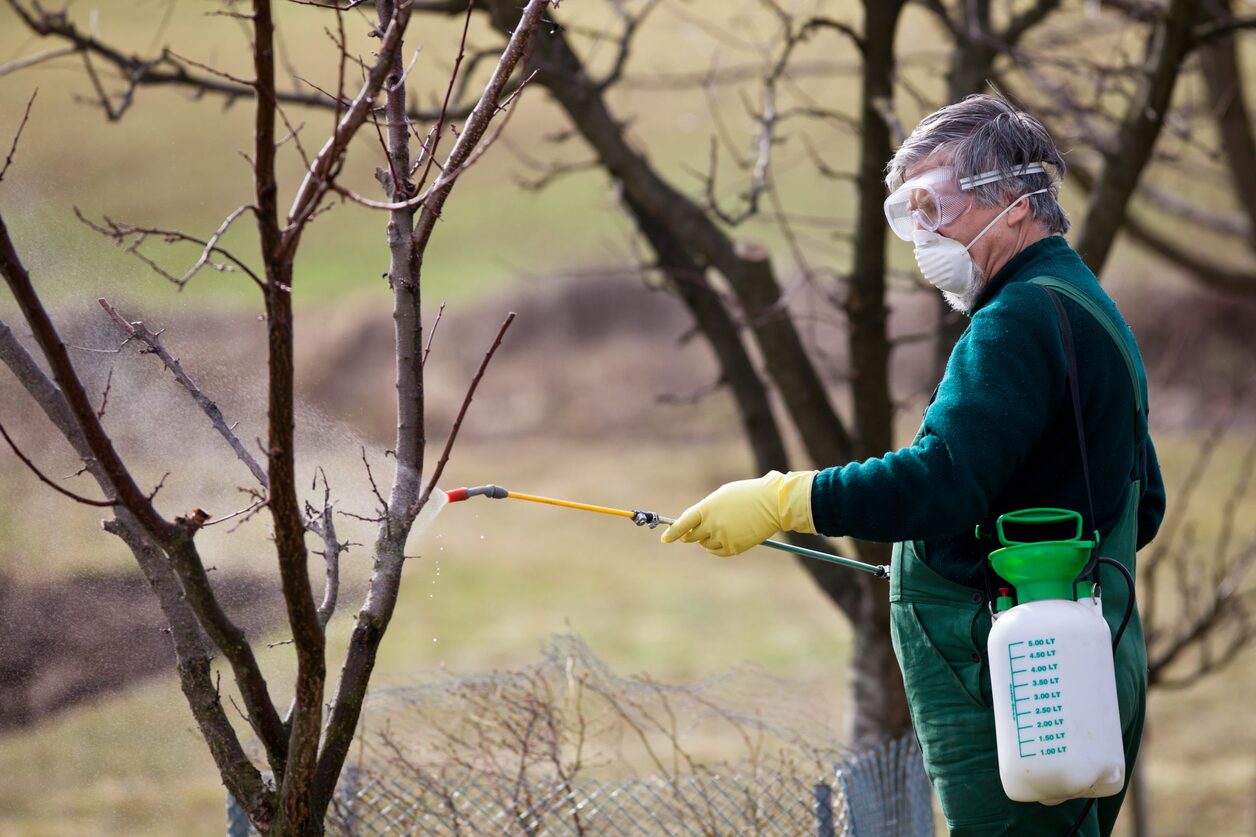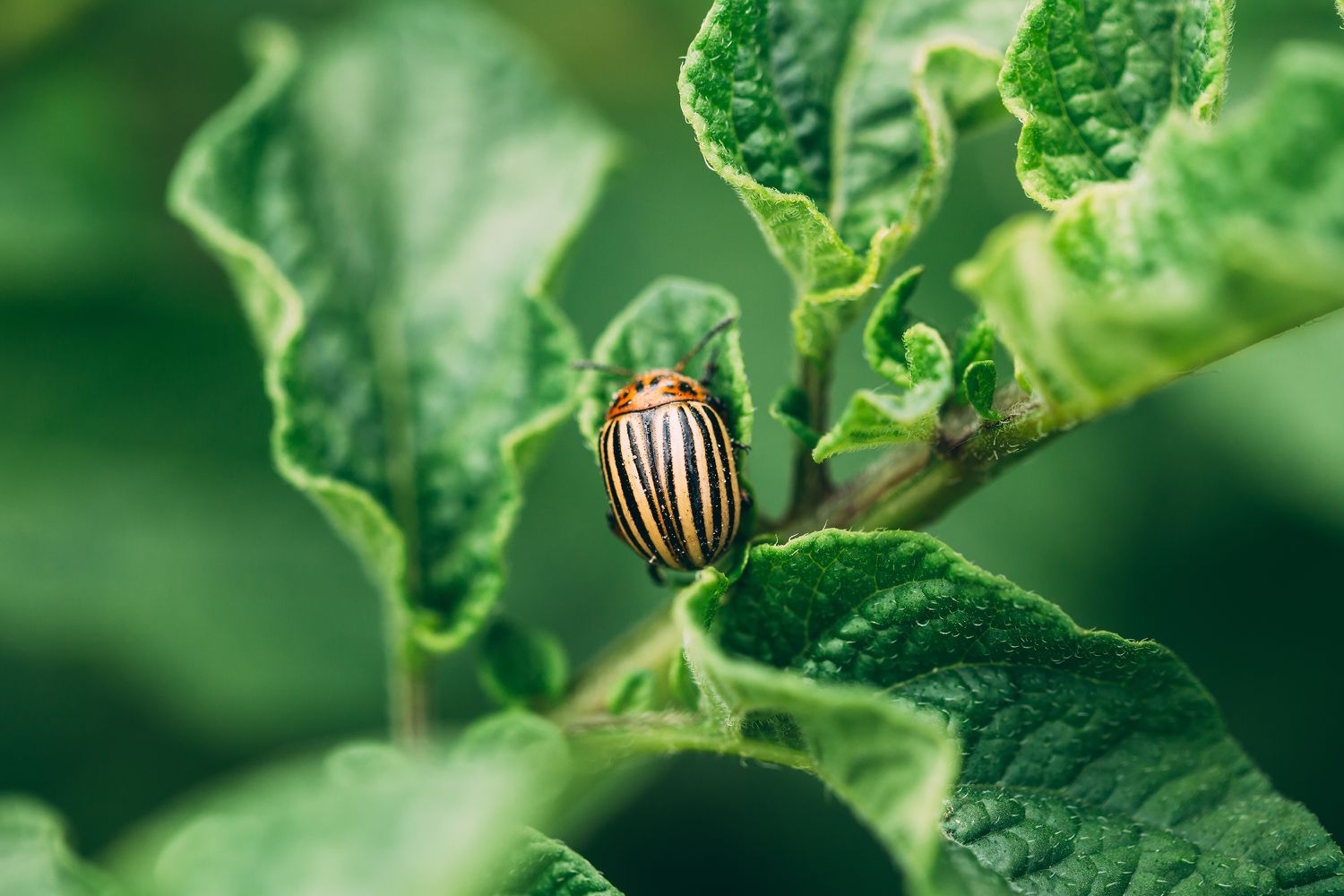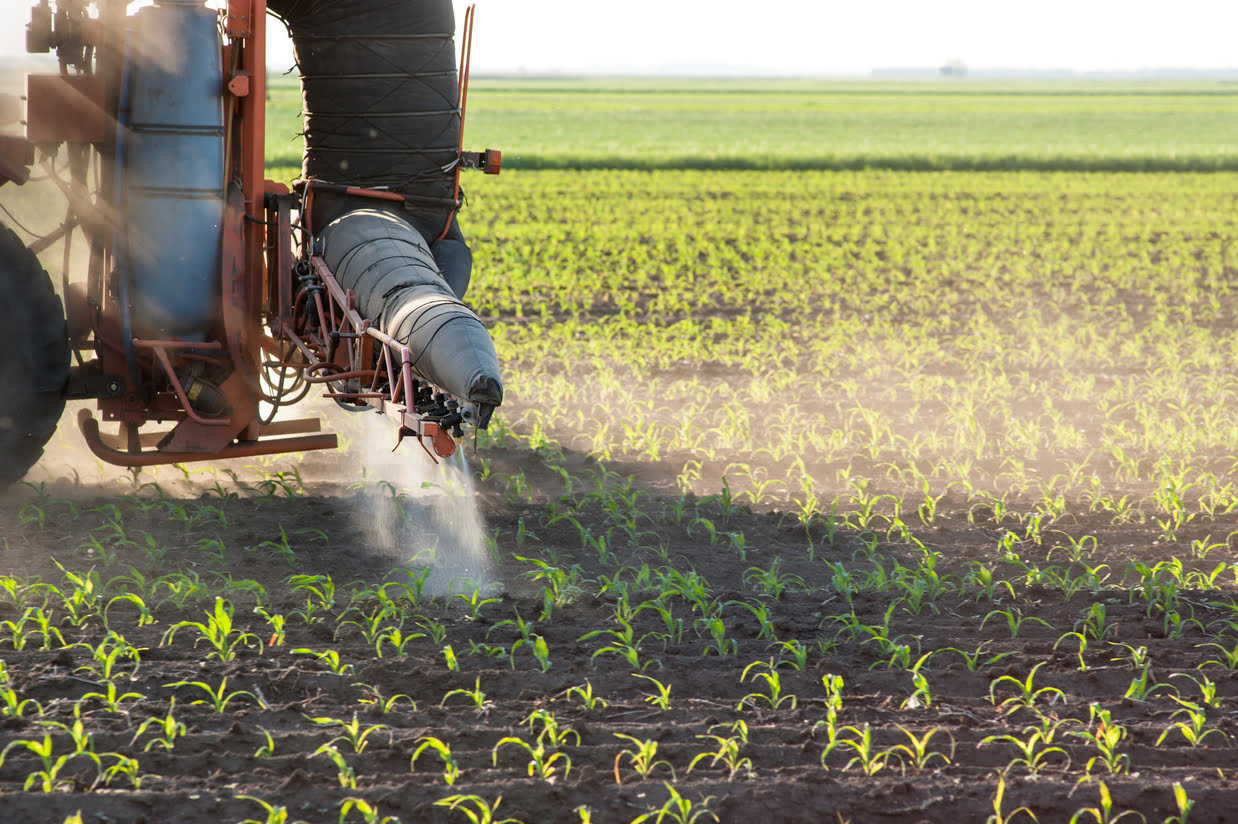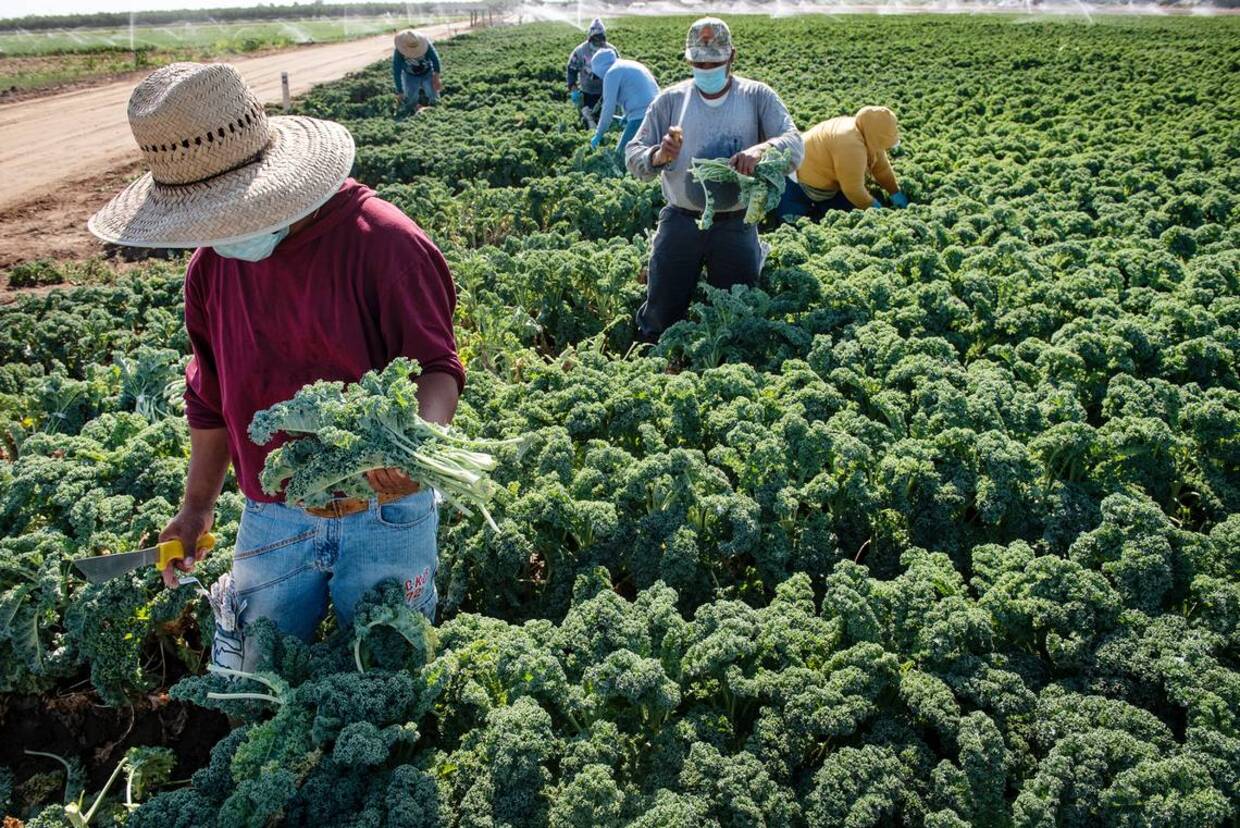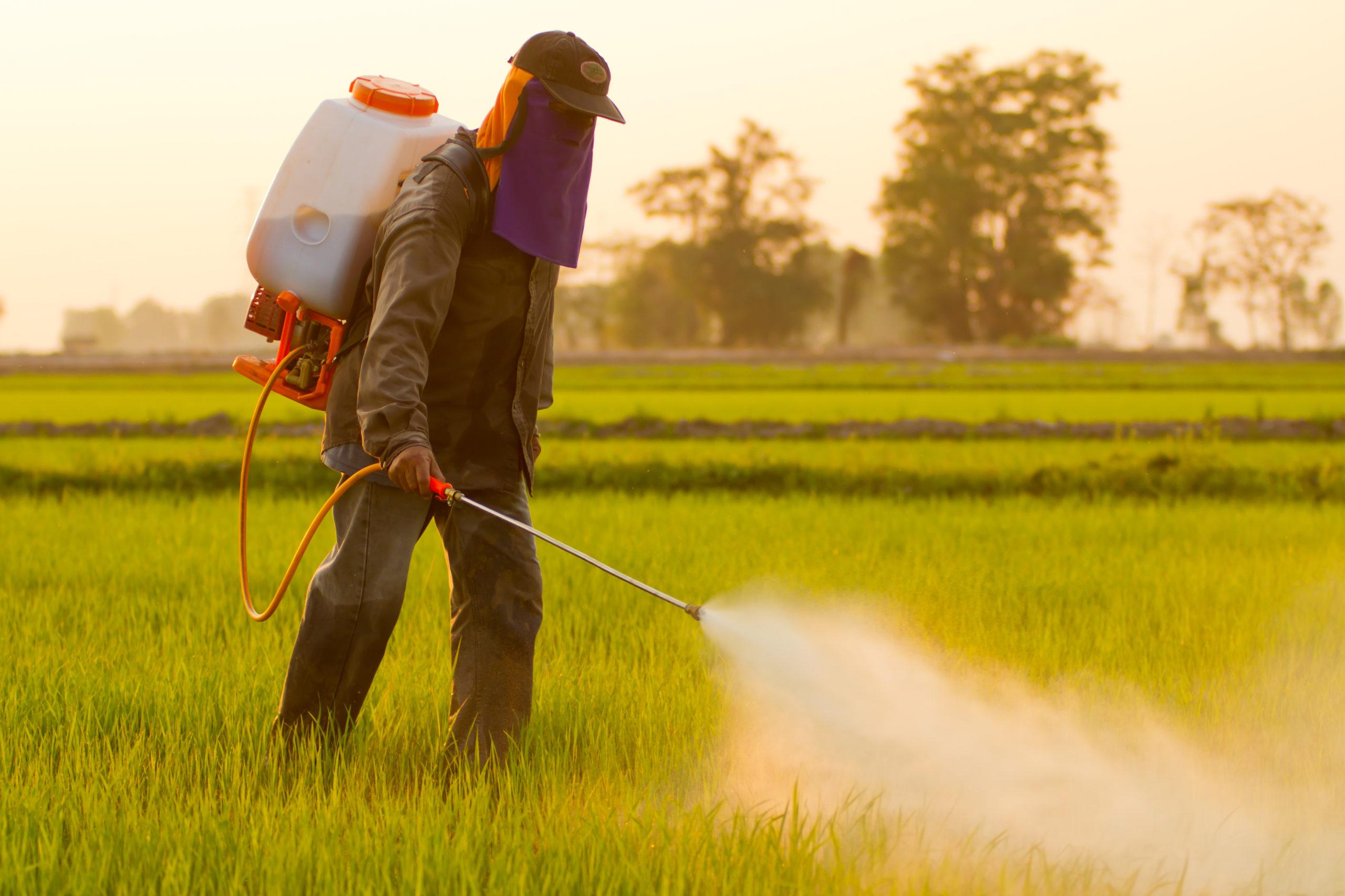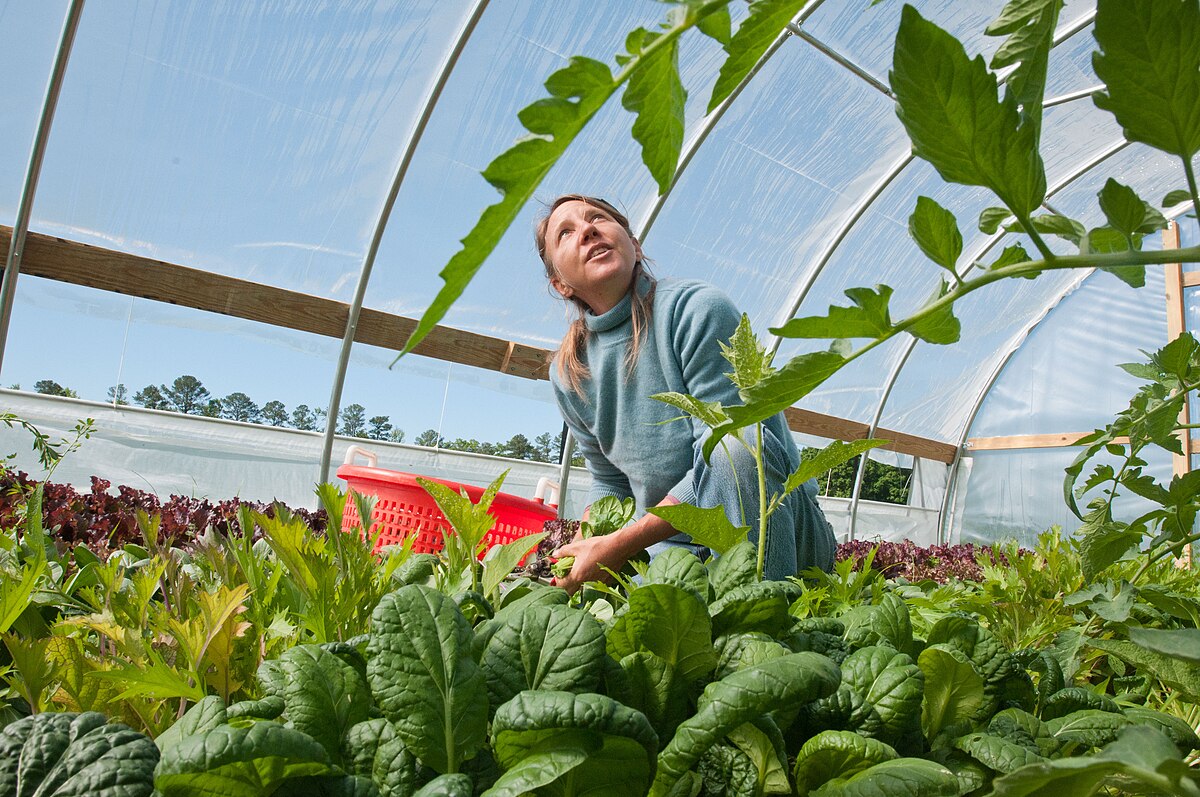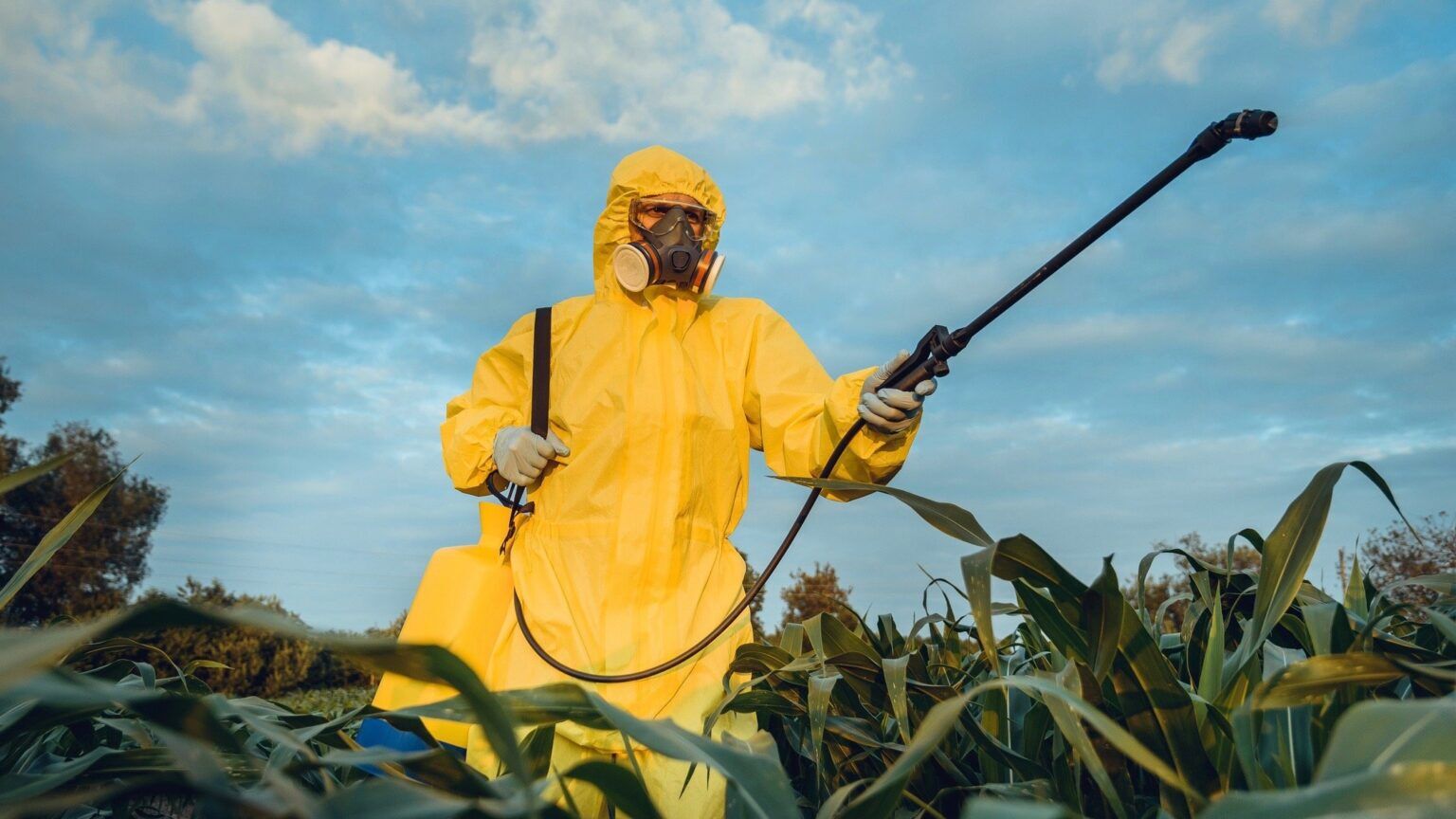Home>Gardening News and Trends>Latest News>What Book By Rachel Carson Exposed The Dangers Of Pesticides To The Public?


Latest News
What Book By Rachel Carson Exposed The Dangers Of Pesticides To The Public?
Published: November 26, 2023
Find out the latest news on Rachel Carson's groundbreaking book that exposed the dangers of pesticides to the public.
(Many of the links in this article redirect to a specific reviewed product. Your purchase of these products through affiliate links helps to generate commission for Chicagolandgardening.com, at no extra cost. Learn more)
Table of Contents
Introduction
Rachel Carson is renowned for her groundbreaking book that exposed the dangers of pesticides to the public. This influential work, titled “Silent Spring,” opened the world’s eyes to the devastating effects of chemical pesticides on the environment and human health. Published in 1962, it became a catalyst for the modern environmental movement and triggered significant policy changes.
In this article, we will delve into the life and work of Rachel Carson, exploring how she became a pioneering voice in environmental conservation. We will also examine the birth of “Silent Spring” and the profound impact it had on public awareness of pesticide dangers. Furthermore, we will discuss the controversies and criticisms that Carson faced and the lasting legacy of her influential book.
Throughout her career, Rachel Carson was a marine biologist, writer, and environmental advocate. Her love for nature began at an early age, while exploring the woods and shores of her family’s Pennsylvania farm. Carson’s passion for science led her to earn a master’s degree in zoology and start a career in the United States Bureau of Fisheries.
Carson’s first major publication, “The Sea Around Us,” became a bestseller and garnered widespread critical acclaim. This book propelled her into the national spotlight and established her as an expert on ocean ecology. Carson used her platform to educate the public about the interconnectedness of all living things in the natural world.
During the late 1950s and early 1960s, Carson became increasingly concerned about the widespread use of synthetic chemical pesticides, such as DDT. She saw the harmful effects of these chemicals not only on insect populations but also on birds, fish, and other wildlife. Carson recognized the potential threat to human health and the delicate balance of ecosystems.
Driven by her conviction to raise awareness about the dangers of pesticides, Carson diligently researched and wrote “Silent Spring.” The book’s title serves as a metaphor for a future without the songs of birds silenced by the indiscriminate use of insecticides, particularly DDT.
Stay tuned as we delve deeper into the life and work of Rachel Carson, and unravel the legacy she left behind through the publication of “Silent Spring.” By exploring the impact of this influential book, we can better understand how it shaped the environmental movement and serves as a testament to the power of knowledge and collective action.
The Life and Work of Rachel Carson
Rachel Carson was born on May 27, 1907, in Springdale, Pennsylvania. Growing up, she developed a deep love for nature, spending much of her time exploring the forests and streams near her family’s farm. This early connection with the natural world would shape Carson’s life and career.
Carson’s passion for science led her to pursue a degree in biology, earning a bachelor’s degree in 1929 from the Pennsylvania College for Women, now known as Chatham University. She continued her studies at Johns Hopkins University, where she pursued a master’s degree in zoology.
Carson initially worked as a research assistant at the Marine Biological Laboratory in Massachusetts, where she studied the biology and reproduction habits of marine organisms. Carson’s dedication and keen observation skills quickly gained recognition, and she was promoted to the position of editor-in-chief for all publications by the U.S. Bureau of Fisheries.
Throughout her early career, Carson focused on writing popular science articles and books, aiming to make scientific knowledge accessible to the general public. Her book “The Sea Around Us,” published in 1951, became a bestseller and further established her reputation as an accomplished writer.
Carson’s ability to translate complex scientific concepts into engaging narratives helped her connect with a wide audience. The success of her books, including “The Edge of the Sea” and “Under the Sea-Wind,” solidified her standing as a prominent nature writer.
While researching her next book, Carson became increasingly alarmed by the widespread use of chemical pesticides, particularly DDT. She discovered that these pesticides not only disrupted ecosystems but also posed significant risks to human health.
Driven by her concern for the environment and public welfare, Carson dedicated herself to investigating the true impacts of pesticides. Her extensive research and meticulous documentation exposed the dangers posed by synthetic chemicals and their long-lasting effects on the environment.
Carson’s work challenged the prevailing notion that chemical pesticides were beneficial and harmless. She raised important questions about the unintended consequences associated with their widespread use, bringing attention to the potential risks and long-term damage caused by these chemicals.
In her personal life, Rachel Carson battled breast cancer throughout the 1950s. Despite her health struggles, she continued to devote herself to her research and writing. Her unwavering commitment to environmental conservation, even while facing personal challenges, demonstrated her deep sense of purpose.
Carson’s groundbreaking book, “Silent Spring,” would become her most influential work and a turning point in environmental awareness. It solidified her reputation as an advocate for nature and propelled her to the forefront of the growing environmental movement.
Join us as we explore the birth of “Silent Spring” and the far-reaching impact it had on public consciousness and environmental policy. Through Carson’s remarkable life and work, we can gain insights into the power of knowledge and activism in shaping a better future for our planet and generations to come.
The Birth of Silent Spring
The publication of “Silent Spring” in 1962 marked a pivotal moment in the environmental movement. Rachel Carson’s book shed light on the detrimental impacts of chemical pesticides and awakened the public to the urgent need for environmental protection.
Carson’s inspiration for writing “Silent Spring” came from her deep concern about the uncontrolled use of pesticides and their effects on the environment. She recognized that these chemicals not only harmed the target pests but also had far-reaching consequences for other organisms, including birds, fish, and beneficial insects.
In her book, Carson diligently documented case studies that illustrated the widespread contamination caused by chemical pesticides. She delved into the devastating effects of DDT on bird populations, drawing attention to the decline of iconic species like the bald eagle and peregrine falcon.
The title “Silent Spring” itself carried a profound metaphorical meaning, expressing Carson’s fear of a future where the once vibrant sounds of nature would be silenced due to the indiscriminate use of pesticides. The book presented readers with a stark warning about the potential consequences of our uncontrolled alteration of the natural world.
The release of “Silent Spring” sparked intense debate and controversy. Powerful chemical companies and government agencies responsible for pesticide regulation vehemently attacked Carson’s claims. They accused her of alarmism and exaggeration, attempting to discredit her work.
Despite the backlash, “Silent Spring” garnered significant public attention and support. The book struck a chord with concerned citizens who were witnessing the decline of wildlife and the deterioration of the natural world. Carson’s eloquent writing style and scientific rigor made her arguments difficult to dismiss.
For the first time, the general public gained awareness of the hidden costs of chemical pesticides. Carson’s book ignited a sense of urgency and a desire for change among readers from all walks of life. The public demanded action and answers from their elected officials and regulatory agencies.
Carson’s meticulous research and vivid storytelling led to a shift in public opinion, provoking a reevaluation of our relationship with the environment. The publication of “Silent Spring” acted as a catalyst for widespread environmental consciousness, laying the foundation for grassroots environmental activism and paving the way for lasting policy changes.
The impact of “Silent Spring” extended beyond the public sphere. Carson’s work also caught the attention of policymakers and scientists, prompting inquiries into the potential dangers of pesticides. The book inspired further research and led to the establishment of environmental regulations and agencies dedicated to protecting natural resources.
Join us as we explore the impact of “Silent Spring” on public awareness and the subsequent changes it sparked within government and society. Through Carson’s courageous efforts to expose the dangers of chemical pesticides, we gain insight into the power of knowledge and activism to create positive environmental change.
The Impact of Silent Spring on Public Awareness
The publication of Rachel Carson’s “Silent Spring” in 1962 had a profound impact on public awareness regarding the use of chemical pesticides. The book ignited a widespread environmental awakening, raising alarm bells about the dangers these chemicals posed to both the natural world and human health.
“Silent Spring” resonated with readers from diverse backgrounds and sparked a sense of urgency and responsibility towards environmental stewardship. It reached a wide audience, capturing the attention of concerned citizens, activists, scientists, and policymakers.
One of the notable impacts of “Silent Spring” was its ability to inspire public dialogue on the topic of pesticide use. Carson’s meticulous research and clear communication helped people understand the complex science behind the issue. By presenting compelling evidence and personal anecdotes, she effectively conveyed the dangers of chemical pesticides, prompting individuals to question their own practices and demand change.
Carson’s book also empowered individuals to take action. Readers were galvanized to become more informed and engaged citizens, voicing their concerns to elected officials and advocating for stricter regulations on pesticide use. Grassroots environmental activism began to flourish, as a result of individual and community efforts to protect the natural world.
Furthermore, “Silent Spring” brought environmental concerns into the public consciousness and helped elevate the issue to the national agenda. The book led to a reexamination of government policies and practices surrounding pesticide regulation. It prompted increased scrutiny and public pressure on regulatory agencies, pushing them to take a closer look at potential health and environmental risks.
The impact of “Silent Spring” also extended beyond the United States. It resonated with readers around the world, triggering global conversations on pesticide use and inspiring similar efforts to enact change. The book played a key role in bringing international attention to the need for environmental conservation and collective action.
Carson’s work was instrumental in shaping the environmental movement of the 1960s and beyond. It encouraged the formation of numerous environmental organizations dedicated to raising awareness and advocating for sustainability. These organizations, such as the Environmental Defense Fund and Greenpeace, have been influential in promoting environmental stewardship and pushing for policy changes.
Through her meticulous research and powerful storytelling, Rachel Carson created a blueprint for environmental advocacy. She taught us the power of knowledge and the importance of speaking up for the protection of our natural world. “Silent Spring” remains a timeless reminder of the influence that a single individual can have in creating a positive impact on society and bringing about environmental change.
Join us as we delve deeper into the controversies and criticisms surrounding “Silent Spring” and the lasting legacy it left on the environmental movement. Through exploring Carson’s influential work, we can better understand the transformative power of raising public awareness and the need for sustained environmental action.
Controversies and Criticisms Surrounding Silent Spring
Upon its release, Rachel Carson’s “Silent Spring” faced a torrent of controversies and criticisms from various quarters. The book challenged the prevailing practices of pesticide use and questioned the efficacy and safety of chemical pesticides, particularly DDT. Carson’s work sparked intense debates, with her critics accusing her of being an alarmist and questioning the validity of her claims.
One of the primary criticisms leveled against “Silent Spring” came from the chemical industry. Companies producing pesticides, such as Monsanto and DuPont, vehemently defended their products and heavily criticized Carson’s findings. They argued that her claims were based on limited evidence and failed to consider the benefits of chemical pesticides in combating disease-carrying insects and increasing agricultural productivity.
Some scientists and agricultural experts also criticized Carson’s work, arguing that she cherry-picked data and presented a skewed interpretation of scientific research. They contended that her assertions lacked scientific rigor, claiming that the harmful effects of chemical pesticides were overstated or inconclusive.
Additionally, some critics accused Carson of being overly sentimental and lacking objectivity. They argued that she relied on emotional appeals and anecdotal evidence rather than hard scientific data. Critics also accused her of being anti-technology and disregarding the potential benefits and advancements that pesticides offered to society.
Others suggested that Carson’s warnings about the imminent extinction of certain bird species were exaggerated. They contended that population declines were due to a variety of factors, such as habitat loss and other human-induced pressures, rather than strictly the result of pesticide use.
Despite the controversies and criticisms, it is important to note that Carson’s work was rooted in extensive research and careful documentation. She meticulously studied scientific literature, consulted with experts, and made efforts to present a comprehensive understanding of the issues at hand. Carson’s influence also prompted further scientific inquiry into the impacts of pesticides, leading to a better understanding of their effects on the environment and human health.
While “Silent Spring” was not universally embraced at the time of its publication, it prompted a significant shift in public opinion and policy debates. The controversies surrounding the book served to spark important conversations about the balance between technological advancements and environmental sustainability. They highlighted the need for continued research, improved pesticide regulation, and the adoption of more sustainable agricultural practices.
Join us as we explore the lasting legacy of “Silent Spring” on the environmental movement and how the controversies surrounding the book have shaped our understanding of the delicate balance between human activities and the natural world. By examining both the criticisms and the impact of Carson’s work, we can gain a more nuanced perspective on the complexities surrounding environmental issues and the importance of open dialogue in finding solutions.
Legacy of Silent Spring: Environmental Movement and Policy Changes
The publication of Rachel Carson’s “Silent Spring” in 1962 marked a turning point in the environmental movement, leaving a lasting legacy that continues to shape policy and public awareness today. Carson’s groundbreaking work not only raised public consciousness about the dangers of chemical pesticides but also brought about significant policy changes and spurred the growth of the modern environmental movement.
“Silent Spring” was instrumental in catalyzing a shift in public opinion regarding the use of chemical pesticides. The book sparked widespread concern and outrage, prompting individuals to question the prevailing agricultural practices and demand action from their elected officials. This groundswell of public support for environmental protection paved the way for comprehensive policy changes.
One of the immediate impacts of “Silent Spring” was the banning or restriction of certain pesticides, particularly DDT. In the years following its publication, countries around the world, including the United States, enacted laws and regulations to limit the use of harmful chemicals. These measures were aimed at protecting human health, wildlife, and ecosystems from the destructive effects of pesticide use.
The publication of “Silent Spring” also emphasized the need for comprehensive environmental policies and regulation. It led to the establishment of the U.S. Environmental Protection Agency (EPA) in 1970, which played a crucial role in setting standards for pesticide management and environmental protection. The EPA continues to monitor and regulate the use of pesticides to this day and has been instrumental in preventing further environmental damage.
Carson’s work served as a catalyst for the growth of the modern environmental movement. It spurred the formation of numerous grassroots organizations and advocacy groups dedicated to environmental conservation and sustainability. These organizations, including Greenpeace, Friends of the Earth, and the Sierra Club, played pivotal roles in raising awareness about environmental issues, influencing policy decisions, and advocating for stronger environmental regulations.
The legacy of “Silent Spring” also extends beyond the realm of policy and legislation. The book inspired a widespread shift in societal attitudes toward the environment. It led to greater public awareness and engagement, as individuals became more conscious of their own impact on the natural world. People began to recognize the interconnectedness of ecosystems, the importance of biodiversity, and the need for sustainable practices in various sectors, including agriculture and industry.
Carson’s work continues to inspire environmental activists, scientists, and policymakers today. Her tireless efforts to raise awareness and challenge conventional practices serve as a reminder that individuals can make a profound difference in protecting our planet. Through her dedication and vision, Carson set a precedent for ongoing environmental advocacy and the pursuit of sustainable solutions.
Join us as we reflect on the legacy of “Silent Spring” and explore how Carson’s work continues to shape environmental policy, inspire activism, and contribute to a greater understanding of the intricate relationship between humanity and the natural world. By studying the lasting impact of Carson’s seminal book, we can glean valuable insights into the importance of collective action and environmental stewardship for a sustainable future.
Conclusion
The publication of Rachel Carson’s “Silent Spring” in 1962 marked a pivotal moment in environmental awareness and activism. Carson’s groundbreaking work brought to light the dangers of chemical pesticides, inspiring public debate, policy changes, and the growth of the modern environmental movement.
Through her meticulous research and powerful storytelling, Carson captivated readers and challenged the prevailing practices of pesticide use. “Silent Spring” prompted individuals to question their own impact on the environment and demand change. The book emboldened concerned citizens to engage in advocacy, leading to the formation of grassroots organizations dedicated to environmental conservation.
Carson’s work also brought about concrete policy changes. “Silent Spring” prompted the banning or restriction of harmful pesticides, such as DDT, and led to the establishment of regulatory bodies, including the U.S. Environmental Protection Agency. These policy changes aimed to protect human health, wildlife, and ecosystems from the devastating effects of chemical pesticides.
The legacy of “Silent Spring” extends beyond policy and legislation. It taught us the importance of questioning prevailing practices, seeking scientific knowledge, and becoming stewards of the environment. Carson’s book continues to inspire individuals to take action and make positive changes in their own lives and communities, promoting sustainability and environmental consciousness.
Carson’s remarkable contributions and her ability to communicate complex environmental issues to a wide audience serve as a testament to the powerful impact a single individual can have on society. Her work has shaped our understanding of the delicate balance between human activities and the natural world.
As we reflect on the legacy of “Silent Spring,” we are reminded of the ongoing need for environmental advocacy and responsible stewardship. Carson’s work serves as a call to action, challenging us to protect and preserve our planet for future generations.
Join us in honoring Rachel Carson’s legacy by striving to be informed, engaged, and proactive in our efforts to safeguard the environment. By learning from her commitment and passion, we can continue to make a difference and create a more sustainable world for all.
